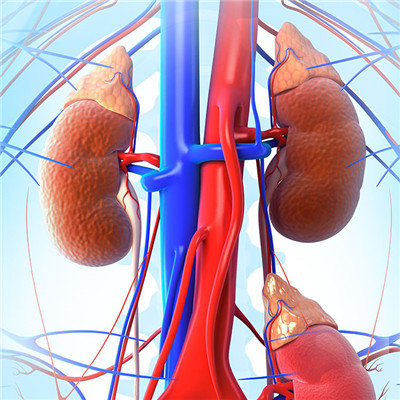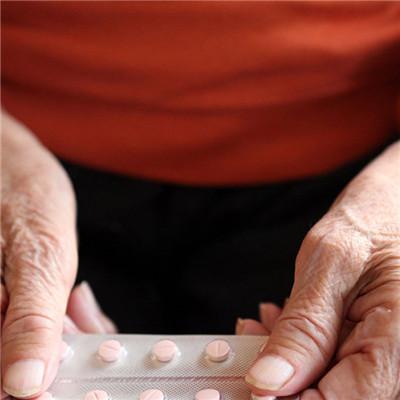What does measles look like
summary
Measles is an acute respiratory infectious disease caused by measles virus. Seasonal high incidence in winter and spring, in the crowded, airless environment, measles virus is easy to spread. Like most viral infectious diseases, there is no specific drug for measles virus at present, and the treatment mainly focuses on symptomatic treatment and relieving the suffering of patients. Here are the symptoms of measles.
What does measles look like
Symptom 1: incubation period: generally 10 days ± 2 days (6-21 days). The incubation period of patients with severe infection or acquired infection through blood transfusion can be as short as 6 days. When they have received immune agents (whole blood, serum, immunoglobulin, etc.) or received measles vaccine, the incubation period can be extended to 3-4 weeks. The clinical manifestation was that measles virus could be excreted from the secretion of upper respiratory tract in 1-2 days after the end of incubation period. After several hours of contact with measles patients, some patients may have temporary mild upper respiratory symptoms and low fever, and even have a transient rash, but it is very rare.

Symptom 2: prodromal phase: generally lasts for 3-5 days, the weak and severe can be extended to 7-8 days, and those who have been vaccinated against measles or have passive immunity can be as short as 1 day. The clinical manifestations are: physical examination shows obvious congestion of oral and pharyngeal mucosa, catarrhal symptoms of inflammation of upper respiratory tract (including conjunctiva oculi), often accompanied by hypogastric appetite, even vomiting, diarrhea and other gastrointestinal symptoms. There are fever, cough, runny nose, tears, photophobia, with varying degrees of systemic discomfort. Fever is usually low in the day and high in the night, rising day by day, up to 39-40 ℃. Febrile convulsions may occur in infants. Headache, dizziness, fatigue and drowsiness are often complained of in older children or adults. Cough gradually aggravated, mostly dry cough, because of upper respiratory tract mucosa inflammation often extended to the larynx, trachea, bronchus, cough often with hoarseness, young children and even shortness of breath and difficulty. Two to three days after the onset of the disease, the plaque on the buccal mucosa on the opposite side of the molar appears, which is the characteristic sign of the precursor stage of measles and has the value of early diagnosis of measles. This small oral eruption is white, 0.5-1 mm needle tip size, scattered on the bright red moist buccal mucosa. At the beginning, there were only a few of them, which increased rapidly. They could fuse and spread to the whole buccal mucosa, the inner side of the lip and the gums. They were also occasionally seen on the conjunctiva of the eyelids, and rarely occurred on the hard and soft palate. When the number of spots is small, it is easy to see small white spots in the sun, and the surrounding red halo. When the number is large, it can fuse into a piece. Only the congested buccal mucosa has fine salt like protrusion particles. It usually lasts for 2-3 days and disappears rapidly. Sometimes it can be seen 1-2 days after eruption. Individual patients at the beginning of the prodromal phase to see the neck, chest, abdomen rubella like or scarlet fever like or urticaria like rash, subsided within a few hours, known as prodromal rash. Sometimes in the palatal lobe (also known as uvula), tonsil, pharyngeal wall, soft palate can be found in brown red spots, rash at the beginning of the rapid disappearance.

Symptom 3: rash stage: rash: 3-5 days after onset, when the symptoms of respiratory tract catarrh and fever reach the peak, the rash begins to appear, often 1-2 days after the appearance of Coriolis plaque. At first, a light red macular papule appeared in the hairline behind the ear, gradually reaching the forehead, face and neck of the head, extending from top to bottom to the chest, abdomen and back, and finally reaching the limbs, to the palms and soles of the feet. It spread to the whole body in 2-3 days. The rash is mainly macular papules. At the beginning, the color is bright red and faded. The size varies. The average diameter is 2-5mm. The distribution is sparse and distinct. At the peak of eruption, the number of rashes increases, and the color becomes dark gradually. However, the skin between rashes is still normal, with occasional herpes or small hemorrhagic rashes. Symptoms of other organ diseases: when the condition is serious, especially with cardiopulmonary failure, the skin rash color can suddenly turn dark, and quickly fade. With the peak of rash, the symptoms of systemic poisoning worsened, the body temperature further increased, reaching more than 40 ℃, mental fatigue, drowsiness, or restlessness all day, cough aggravated, phlegm, dry lips and tongue, extreme congestion of pharynx, edema of eyelids, and more secretions. Neck lymph nodes, liver and spleen enlargement, lung often hear dry, wet rales. Chest X-ray examination showed enlarged mediastinal lymph nodes and thickened lung markings. In the pre vaccination era, adults were less likely to suffer from natural infection caused by wild-type measles virus. In the eruption stage, the poisoning symptoms of adults were more severe than those of children, and the rashes were also dense, but the concurrent bacterial infection seemed to be less than that of infants.

matters needing attention
According to the genetic difference and virulence of measles virus, the number of patients entering the human body, as well as the age, health status, nutrition and immunity of patients, the clinical development process of measles is not only typical measles, but also atypical in some cases.













